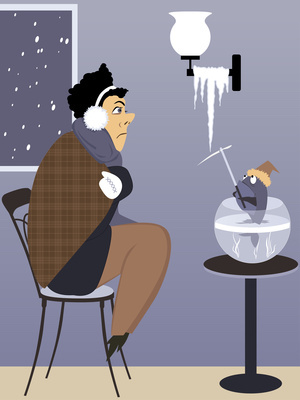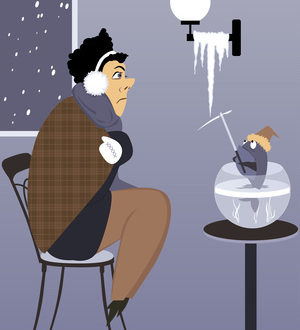 The chilly weather has finally arrived and it is time to take all steps to keep your fingers and toes warm, without facing the chilling prospect of enormous energy bills. As you bring the heaters out from the back of the cupboard, it’s a good time to have a think about home heating costs.
The chilly weather has finally arrived and it is time to take all steps to keep your fingers and toes warm, without facing the chilling prospect of enormous energy bills. As you bring the heaters out from the back of the cupboard, it’s a good time to have a think about home heating costs.
Fortunately, most people have got the message about insulation so homes are warmer nowadays. But in case you need a quick reminder, did you know…?
- About 40%of all household heat is lost through the ceiling, so insulate this first (it’s a little like you putting a hat on). Ceiling insulation material needs to be 100mm to 150mm thick to be effective. It also needs to be airtight, so there are no sneaky leaks.
- Walls account for about a quarter of lost heat, but they are more difficult to insulate unless you are building a new home or extensively renovating. One way to insulate is to reline the interior walls with gib board.
- Raised wooden floors can also be a problem. It is estimated that just over 10% of heat loss is through the floor. Wood fiber insulation board and floor coverings are an effective way of minimising heat loss through the floor. Another alternative is to fit insulation below the floor. You have no doubt seen the advertisements for polystyrene insulation that fits between the floor joists, but some people staple cardboard between floor joists to create an insulated layer of air.
- Just over 10% of the heat of a household is lost through windows. Well-made, full-length curtains or thermal drapes are a simple answer to heat loss through windows. Thick, heavy fabrics are the most efficient. Light materials should be lined. Because a lot of air is lost around the edges, the curtains should extend 150mm on each side, and below the base of the window. A full pelmet is recommended. Heavy drapes are more heat efficient than blinds.
We think the best way to approach heating solutions is to look at the lowest cost options.
Here are some oily rag suggestions that have been sent in by readers:
- K.W. writes, “We have recently lined the existing curtains in our house with new woollen blankets from the army surplus shop. The blankets are folded double and stitched together making an open ended bag which is then attached to the curtain at the top so that the completed article consists of three layers, being the original curtain and two thicknesses of woollen blanket. This has increased the average temperature in the house appreciably by reducing the heat loss through the glass. We believe this to be far more cost effective than double glazing.”
- Joy from Cambridge has this tip for lining curtains. “My thermal drapes are past their best and no longer keep the warmth from escaping through the windows in winter. Before winter started this year I purchased enough shower curtains of a similar colour to the backing on the thermal drapes. They have no pattern on them and are the size used for a shower over a bath. They have worked really well – the difference in warmth when the curtains are pulled back is telling. I bought mine at Kmart – they were a lot cheaper than the Warehouse.”
DIY Tips
There are lots of others things you can do to reduce the chill in your home.
- Making your own “stop draught sausages,” to eliminate door draughts. By adding buttons as eyes, these sneaky heat hounds can develop a personality of their own – an excellent family project!
- Leaky window and door joinery can be sealed with sealants or a self-adhesive foam strip.
- A reader from Auckland writes, “Those with a wood burner or pellet heater could install a small swivelling fan high up in a corner of the room. It will drive warm air down to where you need it most and, if you like, into adjoining rooms.”
- Warm a bed rather than a bedroom. Electric blankets are very cheap to run and hot water bottles are even cheaper!
- A thick layer of newspaper under mats keeps the room warmer in winter and makes the carpet last longer.
We would love to hear from you with tips or questions to share with readers, so please contact us via the website at oilyrag.co.nz or by writing to Living off the Smell of an Oily Rag, PO Box 984, Whangarei.
By Frank and Dr Muriel Newman. Read more here.









Tina - 8 years ago
The type of blanket mentioned by peachgrove has been brilliant for me both saving a fortune in power bills, and keeping me warm.
Mine was given to me by a relative who found the savings so good. (Sunbeam heated throw I think it’s called). I put it over my lap when I am sitting at the computer, or working at a desk and I have it over me while I watch TV. It costs next to nothing to run.